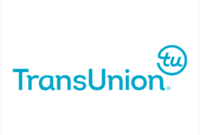Speakers
2 speakers
Date & Time
On Demand
Webinar
Federal agencies are refining their approach to deliver effective public-facing benefits, after the COVID-19 pandemic forced them to adopt a largely digital-first model.
Scott Straub, TransUnion’s senior director of market planning for public sector, said federal agencies are looking to optimize their level of customer experience online, after rolling out stopgap digital solutions in recent years.
“The pandemic really forced them to move a lot of services online, and do it quickly,” Straub said. “We didn’t have much of a choice in the matter – it was, ‘OK, everybody go work from home and go figure out how to do this all remotely.’”
New data shows the public can benefit from the federal government’s digital refresh, since most individuals prefer to apply for government benefits and programs online.
TransUnion, in a recent consumer survey, found that about 70% of respondents who plan to apply for government benefits intend to do so online.
Of respondents who had previously applied for government benefits online, 59% described the online application process as “very convenient.” However, 21% said they were not able to complete the application process quickly.
“There could be a variety of reasons for that. Sometimes it’s that you need to have a different form, that you didn’t have it with you at the time [and] the session times out,” Straub said.
The survey found that respondents who applied for benefits online were more likely to experience delays or denials in benefits, compared to those who applied in-person.
“If you want to go do it in-person, it sounds like you’re also going to get better satisfaction.” Straub said. “But if you go online, you’re probably going to go ahead and have more bumps here and there, and get delays or denials, probably because they just forgot a form.”
Reducing ‘administrative burdens’
Straub said the survey results show agencies have made progress reducing the “administrative burdens” individuals face when seeking government benefits, “but they still have a long way to go.”
The White House is focused on further driving down that administrative burden. Its Office of Information and Regulatory Affairs in July 2023 released a report on ways to reduce the “time tax” for the public to obtain government services.
While most individuals prefer obtaining government services online, agencies are looking to achieve better customer experience across all of their communication channels.
“Agency leaders need to work with their teams in every channel out there. They can’t just [say], ‘Here’s the digital team, here’s the phone channel. And then here’s the online web channel,’ because digital and web and online could be very different in how they interact with each other.”
Most agency call centers, amid the shift to online services at the height of the pandemic, also saw a major uptick in the volume of calls they received.
“When people get confused, frustrated and stuck online, the first thing they do when they want to resolve a question is they pick up the phone,” Straub said.
As agencies are taking the next step to improve customer experience, Straub said many realize a “one-size-fits-all” approach no longer works.
“There are roughly 270 million adults in the country out there that are interacting with the federal government all the time. Each one of them needs their own little strategy,” Straub said.
The pandemic highlighted the need for agencies to improve their level of customer experience – especially in cases where many individuals found themselves applying for government services, including unemployment benefits, for the first time.
“They never wanted to apply for them, because their lives were OK. Then during the pandemic, everything was different,” Straub said.
Building trust in customer outreach
COVID-19 also underscored the need for agencies to identify and develop an outreach strategy for underserved communities.
Straub said underserved individuals may be unaware of certain government benefits, or whether they’re eligible to receive them.
“Sometimes just reaching out and finding those people is a really hard task to do,” he said. “When you start looking for people that are in underserved populations, their digital footprints are also a lot lower. So you need some non-obvious forms of data that can provide some unique insights.”
Some of those alternative data sources could include aggregated credit data and geospatial data.
Agencies can also borrow an industry best practice of gathering market research on underserved communities.
Straub, a former Treasury Department official, said the department saw a “high degree of improvement” with is customer experience, once it partnered with third-party data companies and leveraged their data.
“If you use the internet, you’re creating a digital footprint everywhere you go out there. And so we know that data is there, and that data can also be used for good, to help people get enrolled in the systems and processes,” Straub said.
A data-driven approach to improve customer experience also helps agencies better understand how best to communicate to the public.
TransUnion’s survey respondents rated email, calls and text messages as their preferred ways of communicating with government agencies.
“That is the public saying out to the government ‘This is how I interact with all these other organizations I deal with. I’m OK with interacting with the government this way as well,’” Straub said.
Agencies also face challenges building trust with the individuals – especially at a time when fraudsters routinely spoof an agency’s website or phone number to exploit individuals.
“Consumers who are eligible for benefits and want to enroll, they have to feel comfortable the entire way through the process. Because if they never do feel comfortable with it, they’re almost always going to just cut it off and say, ‘I’m not going to apply for this. I don’t want this anymore,’ because it became too difficult for them.”
Agencies also face a difficult balance of ensuring ease of access applying for government benefits while also putting verification steps in place to prevent fraudulent claims.
One in four respondents planning to apply for government benefits in the next three years expressed concerns that identity verification could result in a significant delay in accessing that government benefit or service.
“They can’t introduce too much friction, because people will stop the process. If it’s too little, well then all the bad actors get through the system. They have to find the friction-right constituent experience out there for everyone.”
Learning objectives:
- Tools and analytics that agencies can use to better reach underserved populations
- Improving the process of applying for federal benefits
Speakers

Scott Straub
Senior Director, Market Planning, Public Sector
TransUnion
Jory Heckman
Reporter
Federal News Network
Please register using the form on this page.
Have questions or need help? Visit our Q&A page for answers to common questions or to reach a member of our team.

